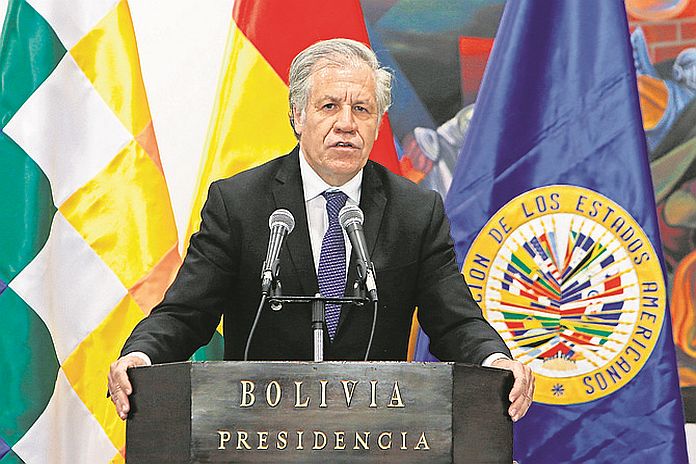WASHINGTON, USA – The Electoral Observation Mission (EOM) of the Organization of American States (OAS) deployed for the second round of the subnational elections in Bolivia congratulates the citizens for their civic behavior, which culminated in a peaceful election day. Likewise, the Mission salutes the Supreme Electoral Tribunal (TSE) for its ability to hold elections in the context of a pandemic.
The Mission, which was led by Rodrigo Alfonso Morales Manzanares, former Counselor of the then-Federal Electoral Institute of Mexico, arrived in the country on April 3 to continue the work of the OAS Mission in the first round, and had seven members of seven different nationalities. Complementing the work carried out by the electoral experts deployed in March, the observers were present in the four departments where voting processes were carried out: Chuquisaca, La Paz, Pando and Tarija.
During its stay in the country, the Mission met with various actors involved in the elections: the TSE and the Departmental Electoral Courts (TEDs) of the aforementioned regions, international organizations, and members of civil society. In addition, the Mission met with candidates from the Movimiento al Socialismo (MAS) and Unidos por Tarija parties. During the meetings, held virtually and in person, impressions were exchanged on the electoral process.
On election day, the OAS observers were present in the precincts from the installation of the voting tables until the vote counting and, later, in the counting centers of Chuquisaca, La Paz, Pando and Tarija.
Regarding the opening, the Mission observed cases of the absence of electoral juries in some places visited, which created delays at the beginning of the voting, because the regulation determines that the polling stations must be opened with a minimum of three authorized members. However, these events were corrected under the procedure provided by the electoral authority.
In the different voting centers visited throughout the day, the Mission was able to observe that the precincts had signs of public healh protocols and protective materials, such as alcohol and facemasks, to avoid the spread of COVID-19. However, there were cases of agglomeration of voters and jurors in closed spaces, especially at the time of the vote count.
After the end of the counting process at the polling stations, the Mission observed disparate procedures for transferring the records to the computer centers, which demonstrated a lack of standardization at this stage. In Tarija, for example, the TED previously established a record collection plan, while in Pando, the center coordinator was in charge of calling taxis – previously hired – to take the material to the place where the summation of votes would take place.
On the other hand, the Mission verified the use of the electoral package monitoring application developed by the TSE in the four departments. The tool, which requires the registration of the bar code of the act, made it possible for TED members to carry out a tracking system for the envelopes containing the election results.
Once present at the four computer centers, the Mission verified that the Departmental Electoral Courts followed up on the transmission of the arrival of the records live on platforms such as Facebook and YouTube, which allowed citizens to follow this stage of the process in a uninterrupted way, as was done in the first round. The Mission congratulates the electoral authority for the continuation of this type of measure, which encourages access to information and provides confidence and transparency to the process.
Like the first round, the Mission reiterates that the electoral authority would benefit if it developed a system for the dissemination of preliminary results, in order to provide the population with reliable and expeditious information during the night of the election. Notwithstanding the foregoing, the Mission verified that the second round was marked by rapid progress in the tallying of votes.
The Mission notes that the current membership of the Tribunal provides confidence and guarantee to the organization of the elections. In the same way, it salutes the candidates and political actors who acknowledged their defeat and highlights the Bolivian electoral turnout, which continues to be one of the highest in the region.
Finally, the Mission thanks the Supreme Electoral Tribunal for the invitation to observe these elections and for the openness and collaboration provided, as well as the financial contributions of Brazil, Chile, South Korea, the United States, France, Guatemala, the Dominican Republic and Sweden, who made this deployment possible. The Mission will present a final report to the Permanent Council of the Organization that will contain the observations of the first and second rounds.





